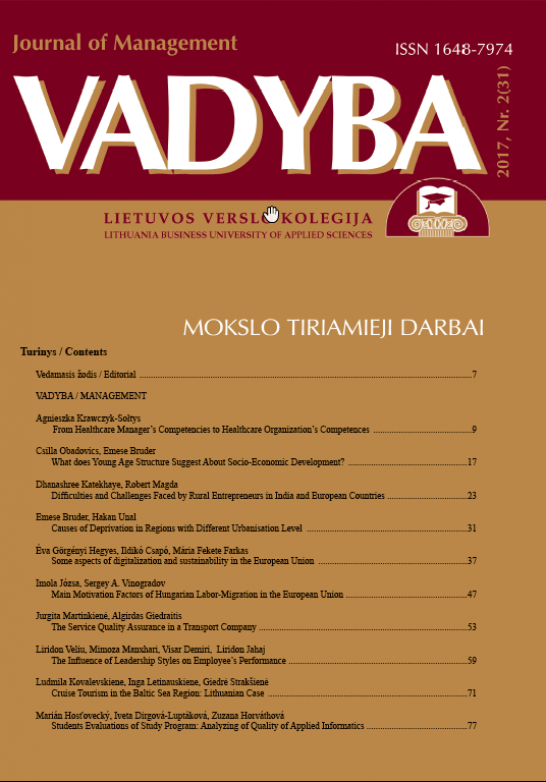FROM HEALTHCARE MANAGER'S COMPETENCIES TO HEALTHCARE ORGANIZATION'S COMPETENCES
FROM HEALTHCARE MANAGER'S COMPETENCIES TO HEALTHCARE ORGANIZATION'S COMPETENCES
Author(s): Agnieszka Krawczyk-SołtysSubject(s): Management and complex organizations, Health and medicine and law
Published by: Lietuvos verslo kolegija
Keywords: Healthcare Managers Competencies; Healthcare Organizations Competences;
Summary/Abstract: Competency identification systems need to identify both – personal (mostly managerial/leadership) competencies and organizational competences. This article is focused on identification the common competencies of healthcare managers significantly shaping core competences of such organizations. There are many models of healthcare managerial competencies – three of them are presented in this article. First is Competency Task Force (The Healthcare Leadership Alliance approach), second – Competency Directory Model (The Global Consortium for Healthcare Management Professionalization approach) and third - NCHL Competency Model (created by The National Center for Healthcare Leadership). In author’s opinion managerial competencies distinguished in these models can significantly shape healthcare organizations competences. There are no universal rules about evaluation criteria for identifying core competences in health organizations because each subject has its own characteristic. Even so building core competences in healthcare organizations can be understood as: creating and supporting an organizational culture that emphasizes continuous learning, providing effective skill development programs with regular updating to include the latest technology and producing incentives for continuous skill development and for acceptance of change. Focusing on core competences, an healthcare organization views today’s output supposed to be concerned with recruiting, developing, deploying and organizing around skills, capabilities and competences. The healthcare leadership’s role is three-fold: first – developing the organization’s strategic architecture or overall planning for building the eligible competences, second – allocating talent to various use or applications, and third – leveraging competences by stretching them across multiple medical services applications. The latter may be achieved through decision-making about competency accumulation, concentration, combination, conservation, reuse and recovery. The turbulent and changing nature of the environment suggests that healthcare organizations competences cannot remain static. They must be continually evolving and developing. Therefore, healthcare organizations have to continue to invest in and upgrade their competences to create new strategic growth alternatives which requires technological and skill accumulation over time (i.e., organizational learning). Healthcare organizations with core competences are able to partially shape the environments (i.e. creating new opportunities) in which they operate and compete and that’s why they are better able to achieve desired outcomes.
Journal: VADYBA
- Issue Year: 31/2017
- Issue No: 2
- Page Range: 9-15
- Page Count: 7
- Language: English

